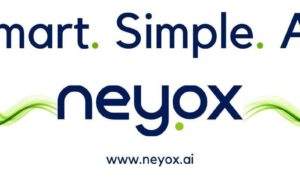In today’s fast-paced business world, IT systems are the backbone of operations. However, even minor IT issues can disrupt workflows, impact productivity, and lead to financial losses. Preventing IT downtime is a priority for businesses looking to maintain seamless operations and meet customer expectations. By understanding common IT challenges and implementing effective solutions, companies can safeguard their systems and avoid costly disruptions.
Understanding the Impact of IT Downtime
IT downtime occurs when technology systems fail, rendering services, applications, or infrastructure inaccessible. The consequences of downtime extend beyond operational delays, often affecting customer satisfaction, employee morale, and a company’s reputation. Studies have shown that even a few minutes of downtime can result in significant financial losses, particularly for industries reliant on real-time transactions.
The causes of downtime range from hardware failures and software glitches to cyberattacks and human errors. Addressing these challenges requires a proactive approach, combining robust IT infrastructure with regular maintenance and contingency planning.
Establishing Reliable Backup and Recovery Systems
Data loss is one of the most severe consequences of IT downtime. Whether caused by hardware failure, accidental deletion, or cyberattacks, losing critical business data can be catastrophic. Implementing a reliable backup and recovery system is essential for mitigating this risk.
Backups should be performed regularly and stored both on-site and in the cloud. Cloud-based solutions offer scalability and accessibility, ensuring data can be recovered quickly, even in the event of a physical disaster. Test your recovery systems periodically to confirm that backups are complete and functional, minimizing the risk of permanent data loss. For businesses seeking advanced data protection, working with a managed IT company in Vancouver or a similar provider elsewhere ensures access to state-of-the-art backup solutions and recovery plans tailored to specific needs. That way, you’ll be sure you put your business in a position to grow successfully.
Keeping Software and Hardware Up to Date
Outdated software and hardware are common culprits behind IT issues. Unsupported operating systems, unpatched applications, and aging equipment increase the risk of malfunctions, compatibility problems, and security vulnerabilities. Keeping systems updated ensures optimal performance and reduces the likelihood of unexpected failures.
Establish a regular schedule for updates and upgrades, including operating systems, software applications, and hardware components. Many modern IT management tools allow for automated updates, streamlining this process and minimizing disruption to daily operations. Partnering with IT professionals can also help identify outdated systems and recommend cost-effective upgrades.
Strengthening Cybersecurity Measures
Cyberattacks are a leading cause of IT downtime, with ransomware, phishing, and distributed denial-of-service (DDoS) attacks targeting businesses of all sizes. Strengthening your cybersecurity posture is essential for preventing breaches and maintaining system uptime.
Invest in robust firewalls, antivirus software, and intrusion detection systems to protect your network from external threats. Regularly update these tools to address new vulnerabilities and evolving attack methods. Implementing multi-factor authentication (MFA) and strong password policies adds another layer of defense, reducing the risk of unauthorized access.
Employee training is another critical aspect of cybersecurity. Educating staff about phishing scams, safe browsing practices, and secure file sharing minimizes the likelihood of human errors that lead to breaches. By fostering a culture of cybersecurity awareness, businesses can reduce their exposure to cyber threats.
Monitoring and Managing IT Systems Proactively
Proactive monitoring and management of IT systems allow businesses to detect and resolve issues before they escalate into downtime. Advanced monitoring tools provide real-time insights into system performance, identifying potential problems such as low storage capacity, overheating hardware, or network congestion.
Managed IT service providers specialize in proactive monitoring, ensuring that businesses stay ahead of issues. By outsourcing IT management to experts, companies can focus on core operations while minimizing the risk of unexpected disruptions. These providers offer round-the-clock support and rapid response times, ensuring swift resolution of any IT challenges.
Developing a Comprehensive IT Disaster Recovery Plan
No matter how robust your IT systems are, unexpected events such as natural disasters, power outages, or cyberattacks can still cause disruptions. A comprehensive IT disaster recovery plan is essential for minimizing downtime and ensuring business continuity.
Your disaster recovery plan should include:
- A clear outline of recovery objectives, such as acceptable downtime and data loss thresholds
- A detailed process for restoring critical systems and data
- Roles and responsibilities for key team members during an incident
- Regular testing and updates to ensure the plan remains effective
Cloud-based disaster recovery solutions are particularly advantageous, offering scalability and rapid recovery capabilities. Collaborating with IT experts ensures your disaster recovery plan is tailored to your business’s unique requirements and includes best practices for swift restoration.
Scaling IT Infrastructure to Meet Business Needs
As businesses grow, their IT requirements evolve. Systems that once supported operations effectively may become strained by increased workloads or new demands, leading to performance issues and downtime. Scaling your IT infrastructure to align with business growth is essential for maintaining reliability.
Cloud computing solutions offer flexibility and scalability, allowing businesses to expand resources as needed without significant upfront investment. Whether adding storage capacity, upgrading servers, or integrating new software, proactive scaling ensures your IT infrastructure keeps pace with your company’s growth.
Partnering with a managed IT provider can simplify this process, offering guidance on scaling strategies and implementing solutions that align with your long-term goals.
Regularly Testing and Updating Contingency Plans
Even the best-prepared businesses can face unexpected IT challenges. Regularly testing and updating contingency plans ensures your team is ready to respond effectively to any situation. Simulating scenarios such as cyberattacks or hardware failures allows you to identify weaknesses in your response strategy and make necessary improvements.
Involving key stakeholders, such as IT professionals, management, and frontline employees, in testing exercises fosters a coordinated and efficient response. Documenting lessons learned from these simulations ensures continuous improvement and readiness for future incidents.
Preventing IT downtime is essential for businesses striving to deliver exceptional service, maintain customer trust, and achieve long-term success. By addressing common IT challenges, investing in proactive solutions, and fostering a culture of collaboration, companies can minimize disruptions and enhance overall performance. With the right strategies and support, reliable IT systems are within reach, paving the way for sustained growth and competitiveness in today’s digital landscape.





























